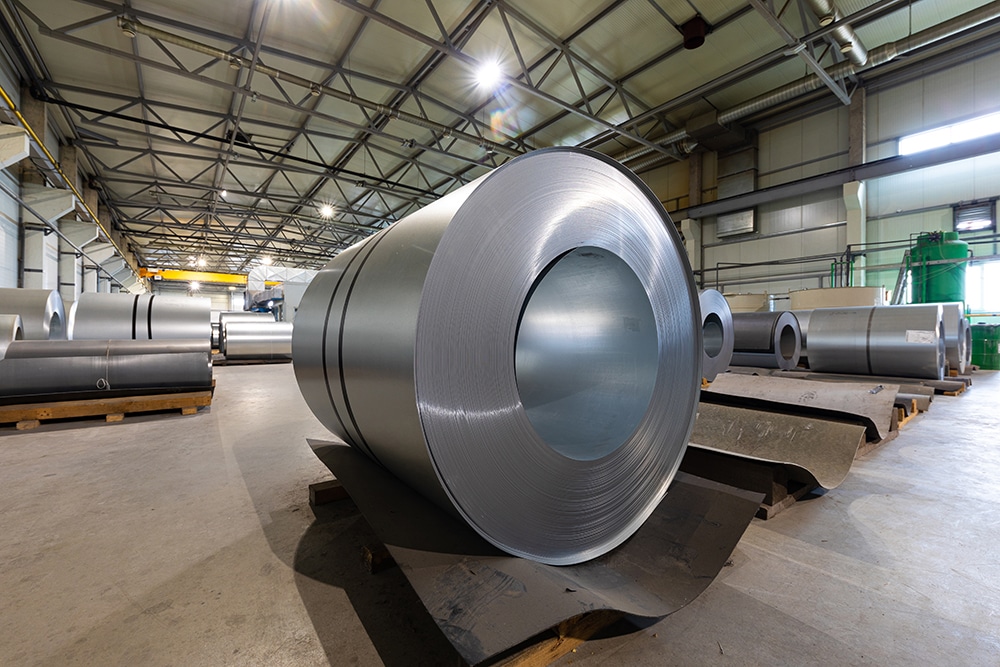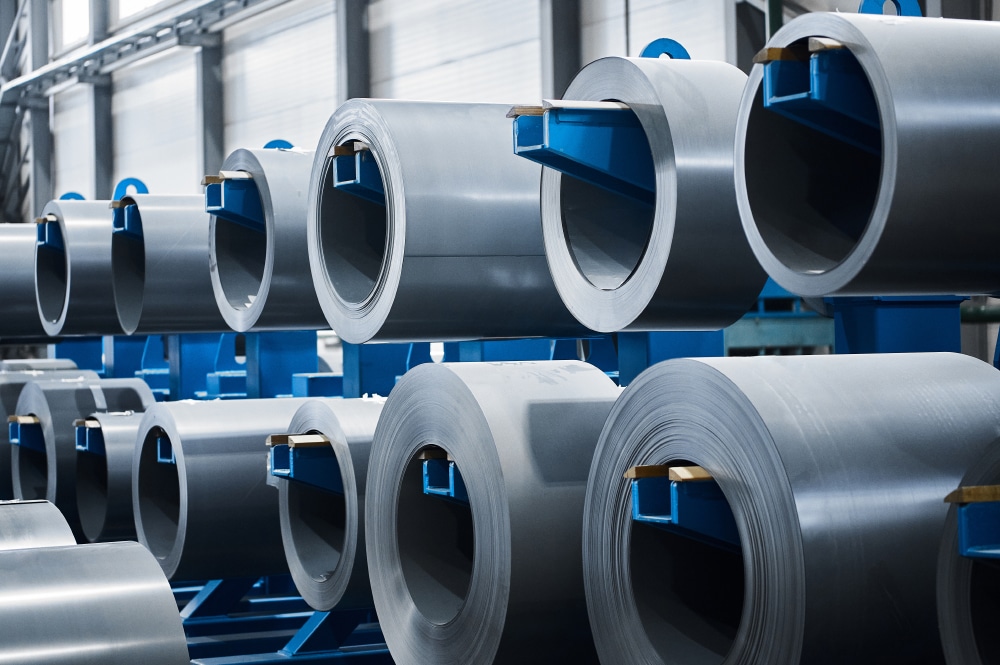2023 in Review: Carbon Steel/Raw Steel Prices

2023 steel prices witnessed heavy bullish pressure at the beginning of the year. However, as the year wore on, more and more bearish pressure began affecting the market. Factors such as Cleveland Cliffs’ price hikes, the UAW strike, and U.S. Steel going up for sale all had major impacts on the market and steel demand. In this article, we’ll review the top highlights in the steel market for each month of 2023.
Get all the news on shifts in steel prices in 2024 and other valuable commodity news. Sign up for the free weekly MetalMiner newsletter here.
Q1 Steel Prices and Market Trends
January started off rocky for steel prices. In December of 2022, U.S. steel prices hit a low point before starting to rise, with hot rolled coil prices increasing by over 8%. Steelmakers like Nucor and Cleveland-Cliffs implemented significant price hikes in an increasingly bullish market, but the resilience of the U.S. economy also faced challenges due to Federal Reserve rate hikes. While most analysts expected short-term steel price increases, they also anticipated abundant supply to prevent the sharp spikes seen during the pandemic.
In February, U.S. steel prices continued to rise, with HRC prices surging over 10% in the previous month. Meanwhile, plate prices showed a modest monthly increase of nearly 2% after a decline in December. Multiple steelmakers, including Cleveland Cliffs, NLMK USA, ArcelorMittal USA, and Nucor, raised their flat-rolled steel prices by $50/st or more. However, skepticism about the sustainability of this uptrend beyond Q1 ran rampant amongst market participants due to ongoing rate hikes pressuring the U.S. economy.
March of Q1
In March, a nearly 49% surge in the U.S. HRC Futures contract injected additional volatility into the U.S. steel market. While HRC prices showed short-term bullish strength, breaking December 2022 highs, they needed to establish a new higher low to confirm a potential uptrend, especially as they approached the $950-1000/ton resistance zone.

Meanwhile, U.S. steel prices rose due to domestic producers raising prices and limited imports. However, Schnitzer Steel Industries Inc. reported lower demand for Q1 2023 due to a slowdown in growth and inflationary pressures.
Q2: Steel Prices Loose Momentum
A sharp drop in Midwest HRC future prices heavily influenced steel prices in April. However, HRC prices continued to rise during the month, with a strong rally that held the potential to persist in the short term. Indeed, U.S. flat rolled steel prices, including HRC, CRC, and HDG, saw respective increases of 33%, 27%, and 25% over four months. Finally, steelmakers like NLMK, Nucor, ArcelorMittal, Cleveland Cliffs, and Evraz North America raising their prices in Q1 continued to place bullish pressure on steel prices at the start of Q2.
Flat rolled steel prices, which had been trending upward trend for four months, faltered in April after significant gains in March. Meanwhile, hot rolled coil prices rose by over 82% from December to April but started to decline afterward. In contrast, plate prices, which had steadily decreased for almost a year, saw an uptick in April.

Once June rolled around, flat rolled steel prices decreased after reaching their peak in April. Hot rolled coil prices also retraced to March levels, resulting in a 13% decline from their April high. Meanwhile, cold rolled coil and hot dipped galvanized prices experienced even sharper month-over-month declines, though plate prices remained relatively stable. Finally, the average mill lead times dropped to their lowest levels in over a year, indicating potential price trend reversals across the steel market.
Does your company have an steel buying strategy based on current steel price trends?
Q3: UAW Strike and Other Bearish Factors in Steel Demand:
At the beginning of Q3, July saw flat rolled steel prices exhibiting bearish trends coming out of June. This was particularly true with HRC prices, which dropped nearly 16%. However, in early July, HRC prices began increasing slightly. Overall, the steel market largely remained uncertain as price levels needed to break monthly resistance zones for a significant trend shift. And though steel prices found a temporary bottom at the end of June after steelmakers like Cleveland-Cliffs and Nucor issued price hikes, the market remained unmoved.
Coming out of July and into August, a mid-July bearish trend took hold. This particularly affected HRC prices, which saw a 3% month-over-month drop. Meanwhile, CRC and HDG prices remained relatively stable, while plate prices fell approximately 1%. U.S. Steel received two buyout offers in mid-August, one from Cleveland-Cliffs and one from Esmark Steel Group. Though the latter offered $7.8 billion, U.S. Steel initially rejected both proposals.
September of Q3
In September, the continued decline in HRC prices brought them closer to their previous major low in December 2022. However, the situation worsened with the commencement of the UAW strike in September, which involved around 13,000 members.

This strike had the potential to impact approximately 400,000 short tons of monthly domestic flat-rolled steel demand and over 550,000 units of monthly vehicle supply. Indeed, U.S. Steel’s Granite City Works blast furnace B became the first casualty of the strike.
Looking for accurate steel price forecasting? View MetalMiner’s full metals catalog and let MetalMiner customize your forecasting needs based on your specific metal types, forms, and gauges.
Q4: Price Increases
Coming out of September and into October, flat rolled steel prices remained bearish, with hot rolled coil prices hitting their lowest levels since December 2022. This brought prices to just 4% above their previous major low. Cleveland-Cliffs also raised prices for various steel products due to the widening spread between future and spot prices which followed a 93.9% correlation. Steelmakers cited tighter supply, but factors like the ongoing U.S. manufacturing sector contraction and steady capacity utilization rates suggest the market may not be as tight as it seemed.
Going into November, a nearly 17% rise in hot rolled coil steel prices significantly impacted the steel market. Cold rolled coil and HRC prices also increased by 13% and 12%, respectively, while plate prices declined by almost 3%. Despite challenges like the UAW strike and low steel capacity utilization rates, U.S. steelmakers managed to secure price uptrends, with longer mill lead times and reduced production levels contributing to price increases.
Don’t miss out. Join the MetalMiner LinkedIn group today for news on aluminum, steel, stainless and copper.


